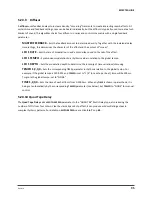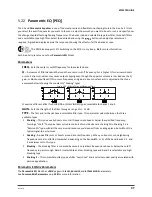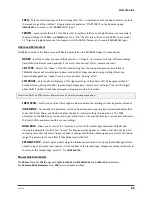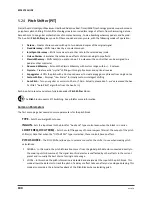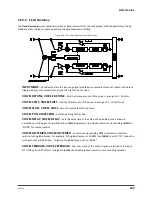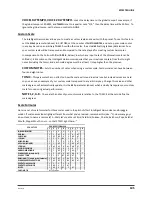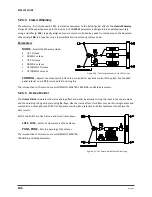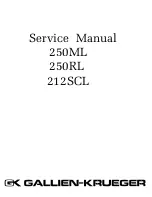
Doc Q7.0
109
Arpeggiator
5.24.8
The
Arpeggiator
uses a 32-step sequencer to control the shift amount of a harmonizer so that complex arpeggio
patterns can be created from a single note. Arpeggios “intelligently” transpose inside the designated key/scale as
you play different notes. So, in the key of C (Ionian) Major, the note “C natural” will arpeggiate as C-E-G (C major),
but the note D natural will arpeggiate as D-F-A (d minor).
Figure 5-34 – The Arpeggiator Pitch Shifter Type
Parameters
The Arpeggiator parameters are identical to those of the
Intelligent Harmony
shifter (p.
) except as noted
below:
RUN
– When set to “ON,” the sequence starts. When set to “OFF,” the sequence stops and resets to the
beginning. Attach the Envelope Follower (p.
) to re-trigger the sequence on each new note.
SCALE
– Sets the type of scale, or scale mode, that the notes of the arpeggio will be drawn from. Examples
are Ionian (major), Aeolian (minor), whole tone, etc. Set to CUSTOM to use custom scale tones (see Intelligent
Harmony above for details).
KEY
– Sets the key that the harmony will be in.
STAGES
– Sets the number of stages in the pitch sequencer.
REPEATS
– Sets the number of times the sequence will repeat once triggered. Set to INFINITE to loop
forever.
TEMPO
– Sets the duration of each sequencer step as a rhythmic value in relation to the global tempo.
GLIDE TIME
– Sets the rate at which the harmony shifts from one pitch to another as the arpeggio shifts.
AMPLITUDE SHAPE, PAN SHAPE
– Specifies how the volume or pan changes as the arpeggiator plays
through one cycle. See Megatap Delay (p.
) for more detail on shapes and alpha.
AMPLITUDE ALPHA, PAN ALPHA
– Sets the acceleration of the rate of volume or pan change.
A setting of 0% results in no effect, while 100% results in an extreme effect.

